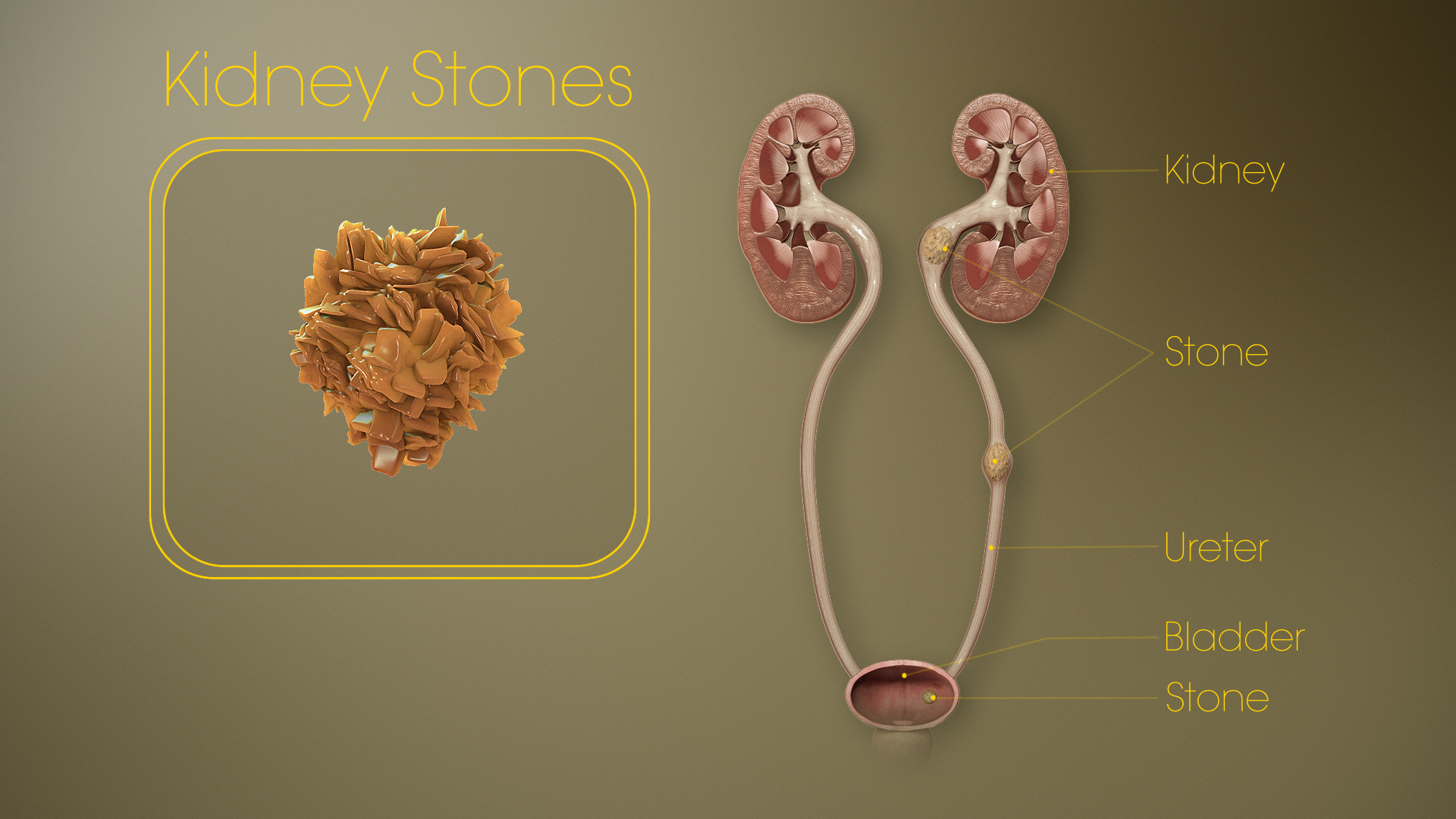A hard crystalline material formed within the kidney or along the urinary tract is known as a kidney stone. Kidney stones usually originate in the kidneys but can also get formed anywhere in the urethra, bladder or ureters. They usually comprise of calcium oxalate but could also be made of several other compounds. Kidney stones can be a very painful condition. If the size of the kidney stone is larger than 5 mm it may block the ureter, causing intense pain in the abdomen or the lower back. Men are more prone to suffer from kidney stones as compared to women. It is estimated that out of 10 people, one person will have a kidney stone at some point of time.

3D Medical Animation still - Kidney Stones
Causes
The primary cause of kidney stones is lack of sufficient water in the body. Environmental and genetic factors also play an important role in the formation of kidney stones. Obesity, consuming foods high in protein, salt or glucose and taking certain medications are also reasons for developing kidney stones.
Symptoms
If a stone is small it may pass through the urinary tract without causing any pain or discomfort . A kidney stone usually has no symptoms until it moves into the ureter. The most common symptom of kidney stones is severe pain. It can be accompanied with blood in urine or nausea and a vomiting or burning sensation while urinating. Chills and fever are also symptoms of kidney stones.
Treatment and Medication
Treatment of kidney stones depends to a large extent on the size of the stone. Most of the small stones are expelled out of the body naturally through urination. In that case no medication is required. In case of larger stones, the primary objective is to give pain relief through medication that can include anti inflammatory drugs and narcotics and in case of infection antibiotics may also have to be administered.
To remove the stones, various procedures like Lithotripsy, percutaneous nephrolithotomy and ureteroscopy may be used. Lithotripsy is a shock wave therapy used to break larger stones into smaller pieces so that they can then be passed out by the body through urination. Percutaneous nephrolithotomy is a procedure which is minimally invasive to remove stones from the kidney. Ureteroscopy is used when the stone is stuck in the bladder or the ureter and it is removed with the help of a ureteroscope.
The Big Picture
It is extremely important to remove the stones. If not removed either by the body naturally through urination or through medical procedures then they can cause various complications leading to kidney damage.
Disclaimer: The information in no way constitutes, or should be construed as medical advice. Nor is the above article an endorsement of any research findings discussed in the article an endorsement for any of the source publications.
References:
Treatment of Kidney Stones
Kidney Stones (Scientific Name: Renal Calculus) results from an amassing of dissolved minerals that accumulate on the inner surface of kidneys. Depending on the amount of deposit, these stones can grow as big as a golf ball. Read More..
A New Treatment For Kidney Stones After 3 Decades
Kidney stones are small, hard mineral deposits that form inside the kidneys, affecting up to 12% of men and 7% of women. High blood pressure, diabetes, and obesity can increase the risk, and the reported incidence is on the rise. Read More..








